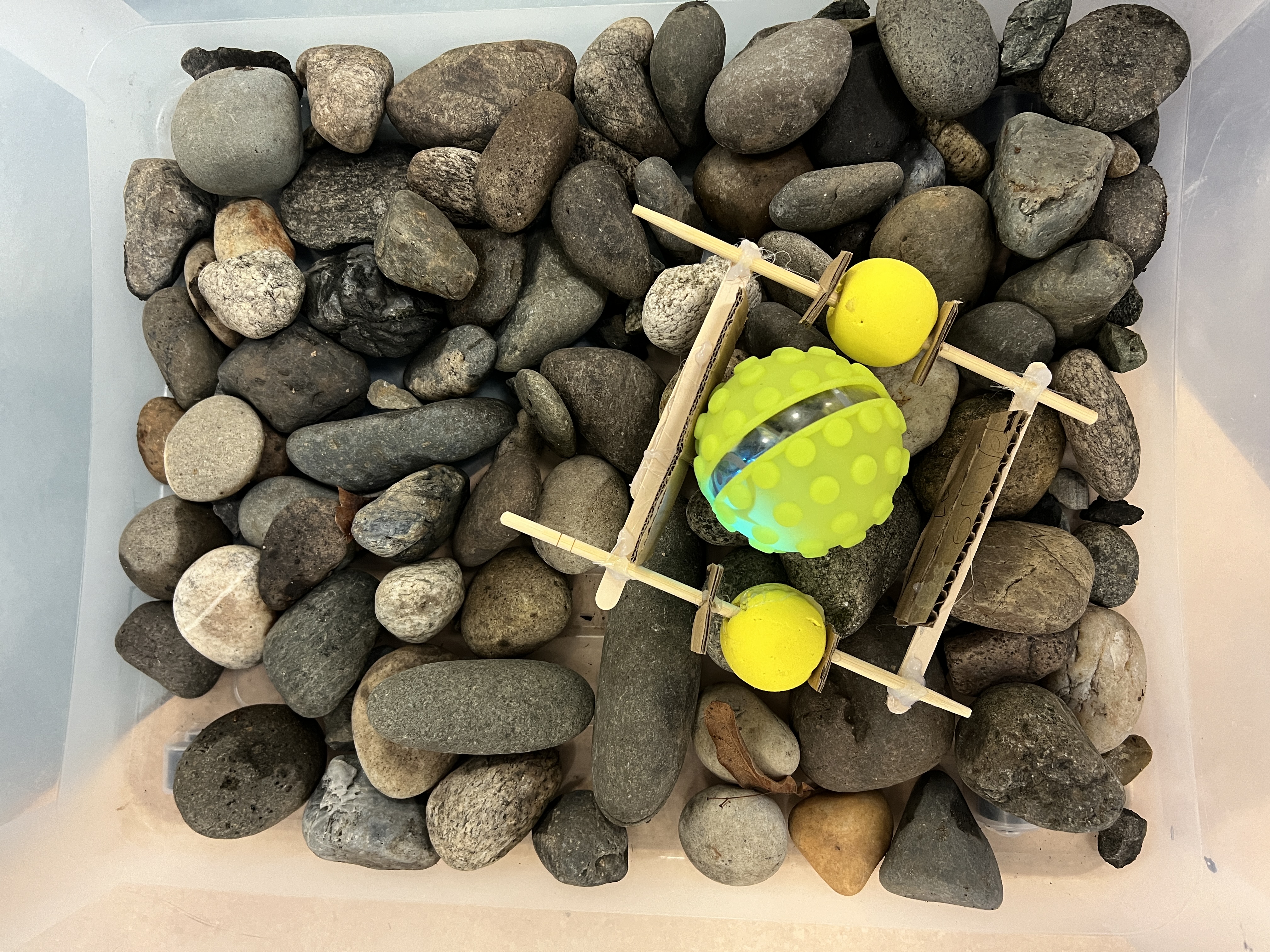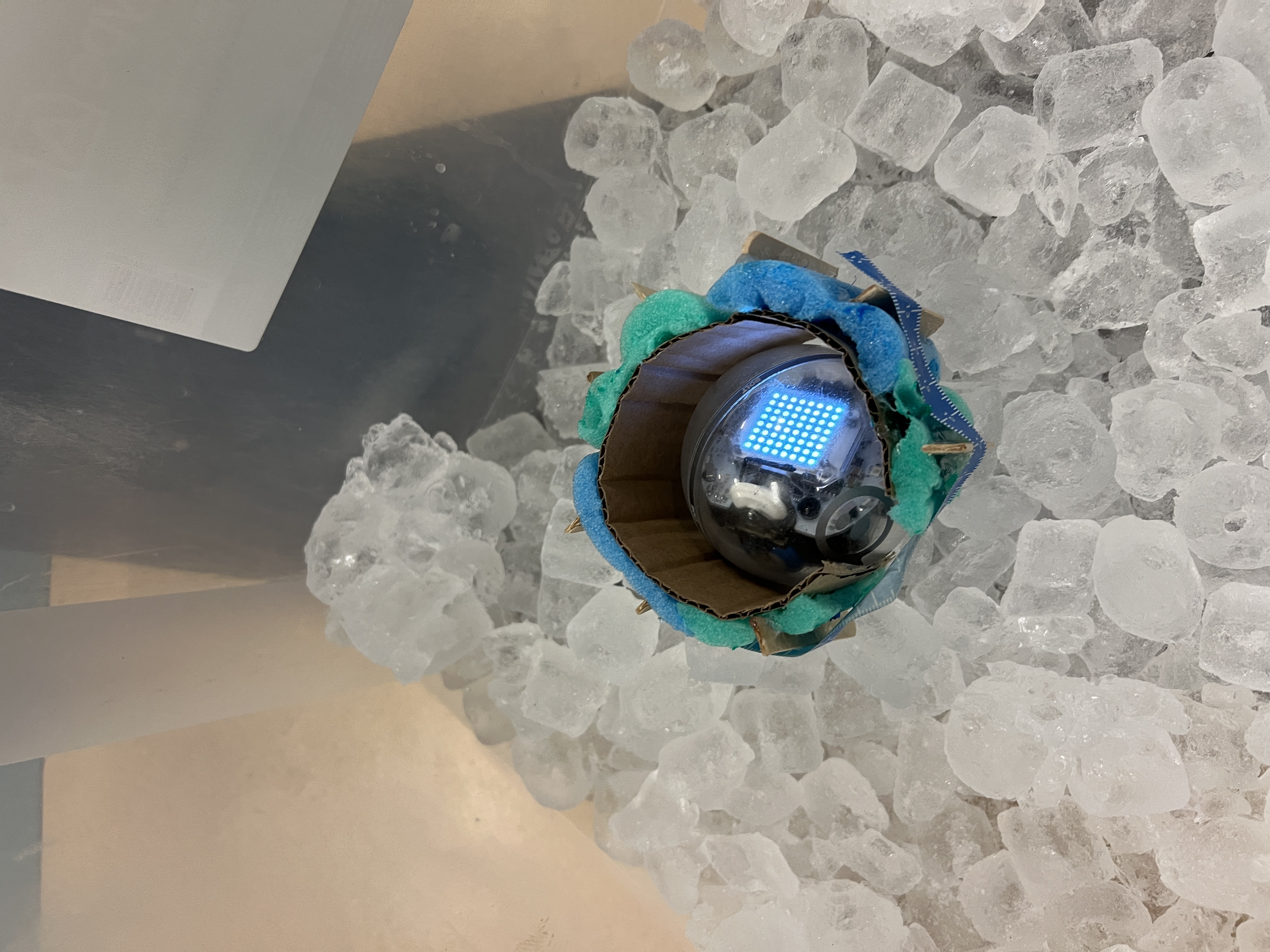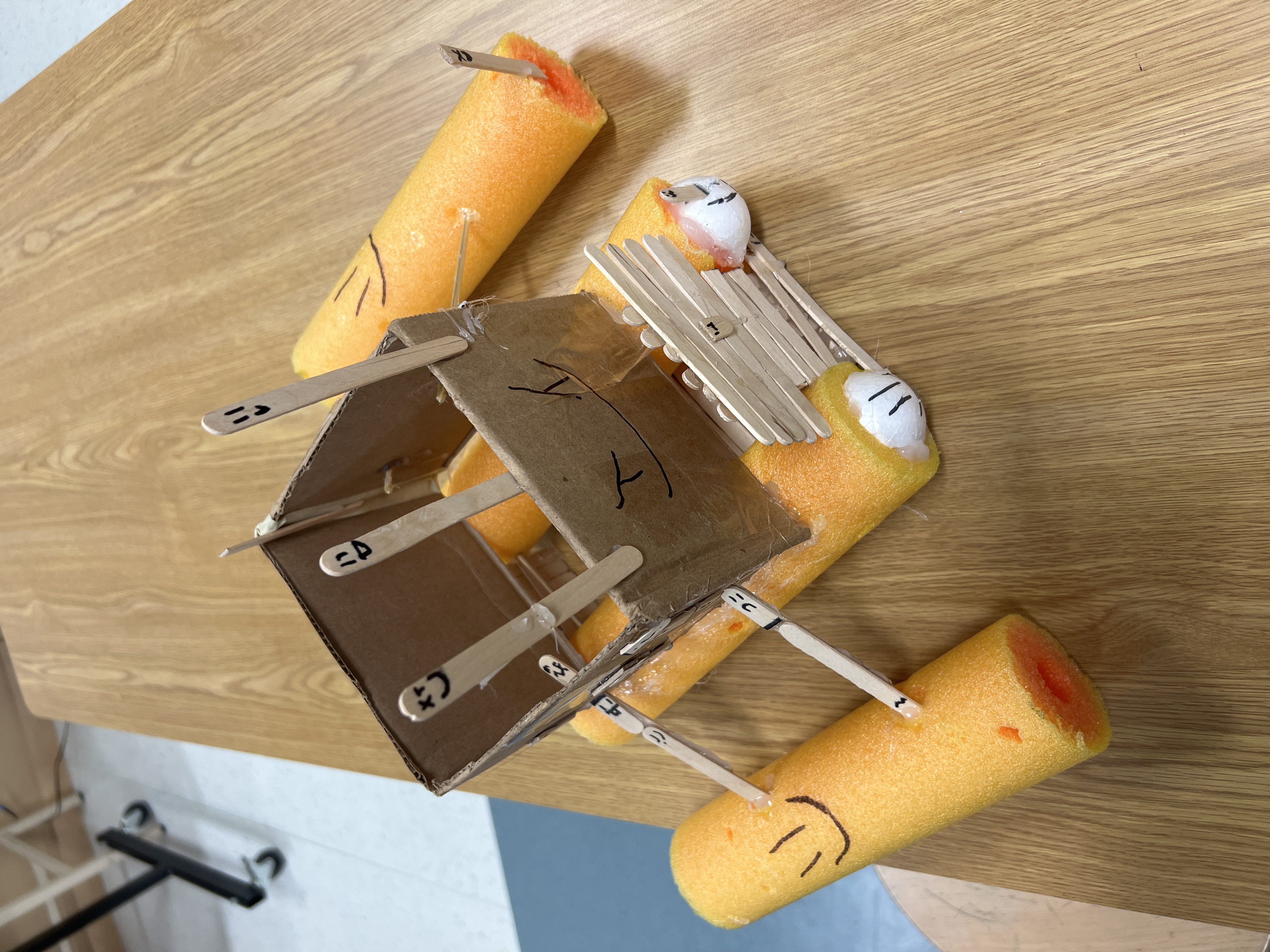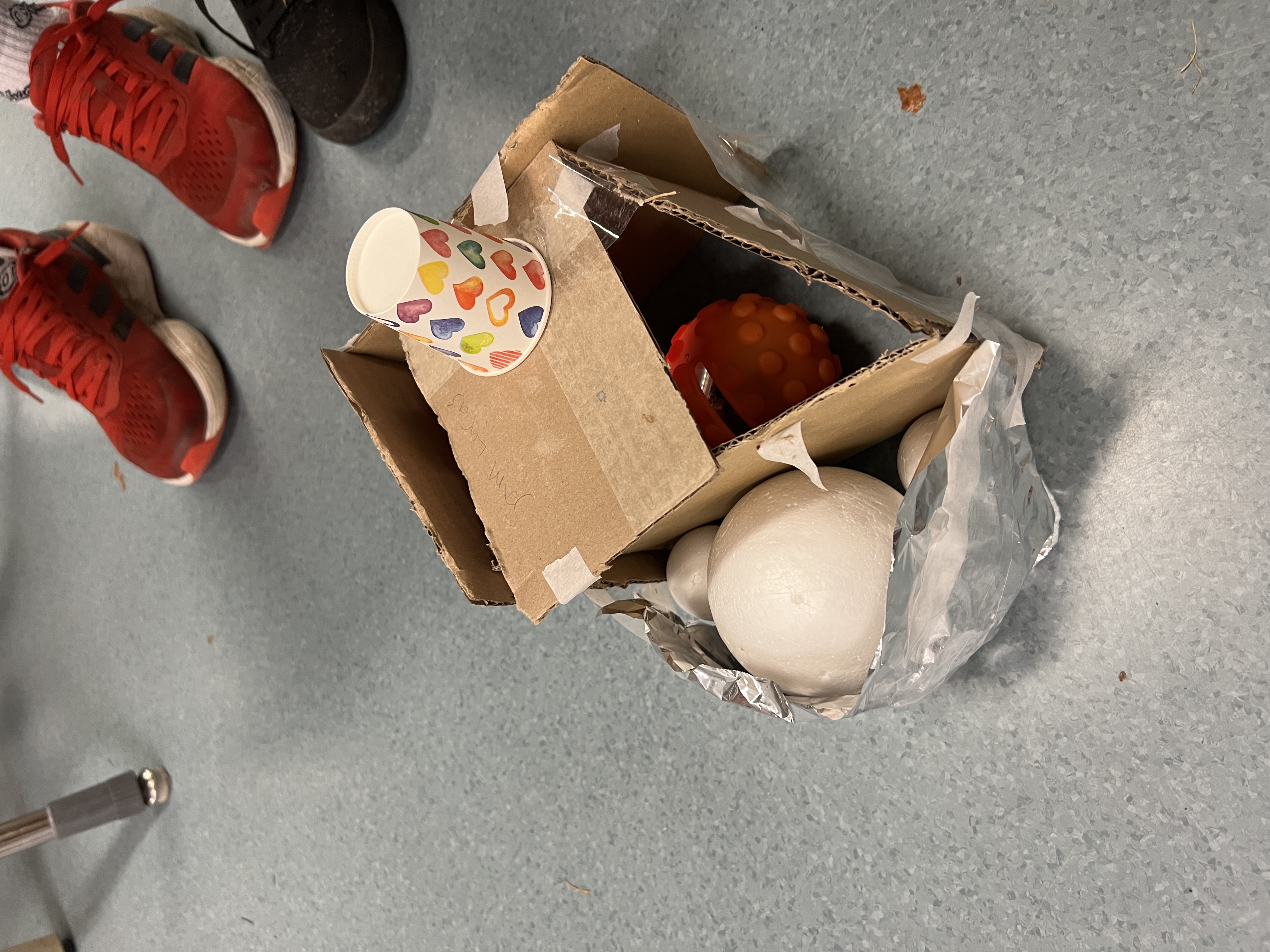Back in November, Alyssa and I planned an Extreme Environments lesson using Spheros. You might remember that conversation from Volume 28. Since then, the class has learned a lot about prototyping and have been iterating and designing, eager to test out their prototypes!
Part of this process was an exercise on product blueprints. To flex their analyzing and observation skills, students created blueprints of their water bottles. They were careful to label the dimensions and the mechanisms that make the lids function. Working backwards from an existing design helped them visualize the relationship between designing an object on paper and making it a reality.

Test Day 🧪
Well, this week, I was back with the super excited class to help run their first prototype test! Alyssa had materials for all five extreme environments ready to go for her students. Tubs filled with sand, rocks, ice and water as well as a leaf blower to test wind 🌬️. After weeks of planning and design, everyone was eager to finally see how well these souped-up Spheros would tackle the difficult terrain. With the students ready, the robots in place, things got started.







Grade 6 Sphero Prototypes (1 Sand, 2 Sand, 3 Rocks, 4 Ice, 5 Water, 6 Water, 7 Wind)
🥁 Aaaannnddd… unfortunately, the Spheros essentially did not work on any of the simulated extreme environments. 😲 The prototypes didn't help on the sand, rocks, or ice. And on the water and wind environments, there was just a little 🤏 movement. This honestly surprised even me! We tried a few different things, like using rubber silicone cases for extra grip and friction, but they still wouldn't budge.
It’s all part of the cycle 🔄
Alyssa reminded her students that it was okay if their Spheros didn’t move around much on the different terrains — this was more of a theoretical project. What was more important were their blueprint designs, their future iterations and improvements to the prototypes after this first round of testing.
So, the students embraced their supposed failures and continued testing and observing their prototypes in the extreme environments. Some documented the changes needed to improve the robots’ ability to move around and planned on making minor adjustments, while others planned on completely redesigning and rebuilding their prototypes.
Feeling iterative? Share this with a fellow teacher and see how they might iterate on a project like this!
Although some of the prototypes didn't work out exactly like we expected, Alyssa and her students weren’t discouraged about the project and were still in high spirits. We honestly just had a good laugh throughout the entire process whenever things didn't go as planned — which is exactly what the design cycle is about!
Later this month, after the students have had time to design and build their next version, I'll join the class again for a final testing day. Stay tuned for Part 3!
Extremely Cool Podcasts!
Podcast: Solve It! for Kids The science podcast for curious & creative kids.
Extreme Places to Live: Peek into the world of real-life scientists, engineers, and experts as they solve problems in their everyday jobs. Kids and families are then invited to take on a challenge and solve a problem themselves! This episode visits an underwater habitat and Mars! Plus, learn how plants live in extreme environments. Listen here.

